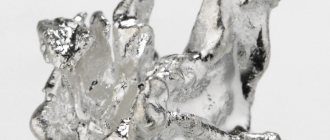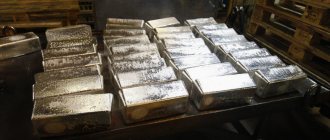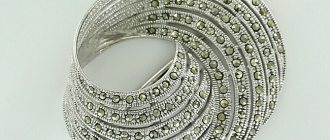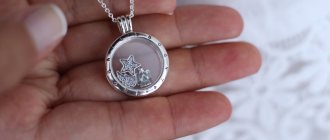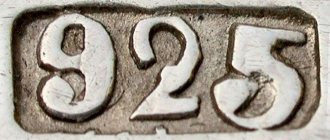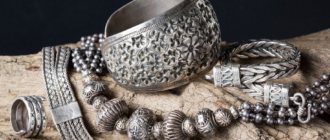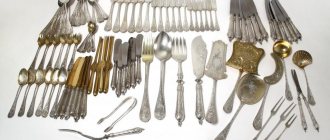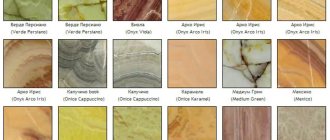The essence of the refining procedure
To extract pure silver, special technologies are used to purify it from various impurities, the totality of which is called refining. Silver is purified in various ways, which consist of several stages, stages to remove excess impurities. Each of them uses its own physical and chemical refining methods for dissolving and separating this element from other substances.
Ways to clean silver yourself at home:
- chemical;
- cupellation;
- electrolysis.
Silver refining at home
The raw materials used are:
- jewelry scrap;
- sludge from electrical silver cleaning;
- “silver foam” – waste from lead purification;
- technical silver – radio components, etc.
Silver refining at home - methods for removing impurities, detailed instructions with video
To clean silver from impurities, a procedure called refining is used.
This technology allows, using physical actions and the use of the properties of chemical reactions, to achieve high purity of the metal.
In addition, refining makes it possible to extract silver from various radio components.
The reaction process to obtain the final result takes different times, which depends on the chosen refining method and the contamination of the alloy being processed.
In the article we will talk about various methods of purifying technical silver from impurities, and will also present to your attention a video on this topic.
To complete the work you will need:
- chemical reagents;
- required skills;
- equipped work place.
Necessary tools and materials for refining
To refining silver chemically you will need:
- special glassware;
- quartz stick;
- nitric and sulfuric acid;
- ammonium chloride;
- sodium sulfide;
- salt;
- paper filter;
- funnel;
- deionized water;
- scales;
- copper scrap or zinc powder;
- special protective equipment - gloves, goggles, gown, respirator.
For cupellation:
- bake;
- crucible;
- lead.
For electrolysis:
- power unit;
- insulation tube;
- brass stick;
- stainless steel fork;
- insulating tape;
- tea filter (bag);
- plastic container (can be from a bottle).
Refining methods at home
The choice of method depends on the quantity, condition of the raw materials and continuity of production. The chemical method of refining silver is easier to perform, but the output produced is silver that is not always of a high enough standard. Low grade, with an admixture of other elements comes out during cupellation. The purest, highest quality is obtained by electrolysis.
Chemical method No. 1
Nitric acid, deionized water, scale, glass container and quartz rod for silver refining
Objects containing silver are placed in nitric acid. To do this, prepare a mixture of water and acid (1:1 ratio) and stir with a quartz stick. The dissolution of the metal occurs over several hours. The solution turns blue and silver nitrate is formed.
The next stage is the formation of silver plaque from its nitrate. To do this, copper scrap (pipes or other objects) is used, which is first thoroughly cleaned of deposits and contaminants. Copper acts as a catalyst.
After placing copper pieces into the solution, they are quickly covered with a white coating - silver cement. It must be periodically removed and shaken to the bottom of the jar. Copper gradually dissolves in silver nitrate and therefore, if necessary, it must be added until the reaction completely stops.
Then the solution is filtered, the cement is washed several times with clean water, dried well, and collected into a single piece when heated in a crucible. The metal turns out to be of low standard (up to 980), so it must then be further purified by electrolysis.
Chemical method No. 2
"Wet" method of silver refining
Technical elements containing silver are immersed in nitric acid. The liquid gradually turns blue. Then the silver solution is poured into another container, and table salt is gradually added to it while stirring. A chemical reaction occurs and a white precipitate falls to the bottom - silver chloride.
When the reaction ends, the water must be drained. Sulfuric acid is poured into the resulting precipitate to separate it into pure metal and its salt. Then zinc powder is poured in. After its complete dissolution, silver cement is evaporated from sulfuric acid, which precipitates. It is washed, dried, and melted into an ingot. The result is a white precious metal of 99%, the highest standard.
Cupellation
Melting silver in a crucible
Silver refining using this method is based on the unique ability of lead to oxidize. Then it, along with other impurities, is separated from the silver. But gold and platinum group metals remain, and then they need to be separated by other methods.
Cupellation is carried out in a preheated oven, which is covered inside with marl - a porous clay enriched with limestone that absorbs lead oxides. A bowl-shaped crucible with a lead-silver mixture is placed inside. When it is completely melted, air flows are launched to oxidize the lead. The output is an alloy with a rainbow shimmer, which is poured into molds.
Electrolysis
To obtain silver of the highest standard, the white metal is refined by electrolysis. To do this, an electrolytic bath is constructed from a plastic container, which is filled with a solution of nitrate of this white precious metal, diluted with water in a 1:1 ratio.
Silver refining by electrolysis
The bar obtained from silver cement using the previous method is placed in a filter bag. First you need to weld a loop of silver wire to it, to which the silver ingot will cling to a brass stick. It is threaded along the edges of the filter bag and is located above the bathtub. The place where the silver loop and the bar are welded must be above the liquid level so that the metal does not dissolve.
The stainless steel fork is bent so that it can be hung on the side of the bath, the handle is wrapped with electrical tape. The “minus” cable is connected to the plug placed in the bath, and the “plus” cable is connected to the brass stick. The voltage should be no more than 8 V, power up to 5 A.
After turning on the power supply, the reaction begins immediately. The bar decreases in size, and the walls of the bath are covered with crystals of purified white metal. They need to be broken off periodically so that they do not reach the filter bag, to prevent short circuits. After the process is completed, debris remains in the filter, and clean crystals must be collected from the walls of the container, dried and fused into an ingot. This refining of silver produces 999 fine metal for the manufacture of jewelry.
Silver refining methods. Step-by-step instruction
There are many methods aimed at separating the noble metal from the impurities of the house. The most popular of them are:
- Chemical cleaning method is carried out using acids and sodium sulfite. It is not a complex procedure, but requires compliance with certain rules. As a result, it is not always possible to obtain high-quality precious metal.
- Electrolytic separation - used if it is not possible to buy and use acids. It is the most effective method for removing silver nitrate impurities.
- Acid-free refining – purification is carried out without the use of acids, after preliminary preparation of the metal.
- Cupellation – used for low-grade precious metals. The method requires the use of special equipment. Promotes quick cleaning of low-grade metal.
- Obtaining silver from photographic film - used for processing photographic paper, X-ray film, and fluorography. Releases a small amount of technical precious metal.
Silver refining using electrolysis
Electrolytic for technical silver
Silver refining by electrolysis involves the use of ammonium nitrate and sulfuric acid heated to a certain temperature. Heating these components promotes the formation of nitric acid, which is actually capable of releasing technical metal.
To carry out refining you need:
- glass containers for acid;
- sulfuric acid electrolyte;
- saltpeter;
- sand bath;
- zinc shavings;
- salt;
- hydrochloric acid;
- hot water.
To dissolve a precious metal using this method, you will need 1 liter of aqueous electrolyte, 0.5 kg of saltpeter per 100 grams of released metal. Dissolution will take place throughout the day.
The formula for successfully dissolving silver consists of the following steps:
- A three-liter glass container must be placed in a sand bath heated by an electric stove.
- The container is filled with 150 g. saltpeter, 300 ml of electrolyte.
- When heated, these substances begin to react. The reaction appears to resemble boiling, with the release of red gas. At the same time, the color of the liquid changes and becomes blue.
- When the reaction stops, the remaining chemical components are added in proportion to the amount of metal released. Elements coated with precious metal are immersed in the solution.
- When the metal is completely dissolved, you can begin to produce silver chloride. To do this, fill the container with warm water, almost to the top. Salt is poured in there until flakes appear on the surface.
- Now you can begin filtering the chloride. After separating the flakes from the liquid, hydrochloric acid is poured into it. The acid should be approximately 2 cm above the sediment. Zinc shavings are added to the solution as a reducing agent, which reacts with the acid, displacing the silver metal. The process is accompanied by the release of hydrogen.
- Already half an hour after deposition, a carbon deposit forms, which is silver.
- It is necessary to check whether there is acid in the solution: to do this, the liquid is crushed with zinc shavings, as a result of which the dissolution reaction starts. If there is no such reaction, the container should be filled with hydrochloric acid, this is necessary in order to clean the resulting metal from zinc, which makes it brittle and unsuitable for further use.
- At the end of the reaction, the resulting metallized precipitate is washed. Now you can move on to fusing the flakes using a crucible and burner.
Filtering stage
Necessary Items for Silver Filtration
To separate silver from the solution after the chemical refining procedure, you will need filter paper and a funnel. The solution with silver cement is poured into a container through a prepared filter - the copper salt flows off, and white metal remains on the parchment in the form of cement powder. This filtrate must be additionally washed several times with distilled water.
The drained solution contains a small percentage of silver, which can be extracted by adding table salt. After some time, a cheesy sediment will appear - silver cement.
All the resulting silver powder is dried and then fused. To avoid loss of silver dust, equal proportions of borax and baking soda can be added to the top of the crucible, which will create a protective glassy film.
In this way, a low-grade silver alloy is obtained. Next, it is necessary to carry out electrolytic refining to purify the white precious metal to a high purity.
Filtered liquid
Methods for cleaning silver
Today, refining can be carried out using a variety of methods, including chemical, electrolytic methods, and cupellation.
The electrolytic method is used to obtain high-grade silver.
When working with low-grade alloys, cupellation is used. A special furnace with a cup-shaped crucible is used here. This method is relatively simple and is based on the principle of separating lead and impurities. In this case, only metals included in the platinum group, that is, platinum itself, gold and others, are not separated from silver.
The inside of the furnace is covered with marl, that is, a special porous clay based on limestone, this allows it to absorb lead oxide. It is with this method that an interesting phenomenon is observed: when lead goes into the oxide state, the surface of the working alloy takes on a bright, rainbow color. The shine of pure silver shines brightly through the resulting crust, indicating the end of the refining reaction. The process is not only simple, but also very spectacular and beautiful.
Safety precautions during refining
When carrying out chemical methods for purifying silver, it is necessary to ensure good ventilation of the room, and it is better to do everything in the open air. As protective equipment, you need to use rubber gloves, special goggles, a robe, and when working with nitric acid, a respirator, because nitrogen vapor, if it enters the lungs, can cause paralysis of the upper respiratory tract. Do not pour water into acid to avoid splashing this caustic liquid. You can only add the concentrate itself to the water.
What clothes should you wear for the refining procedure?
Related video: How to remove silver by electrolysis
Useful articles
The process of chrome plating metal products at home
Carrying out gold refining at home
What is the price of one gram of silver today
